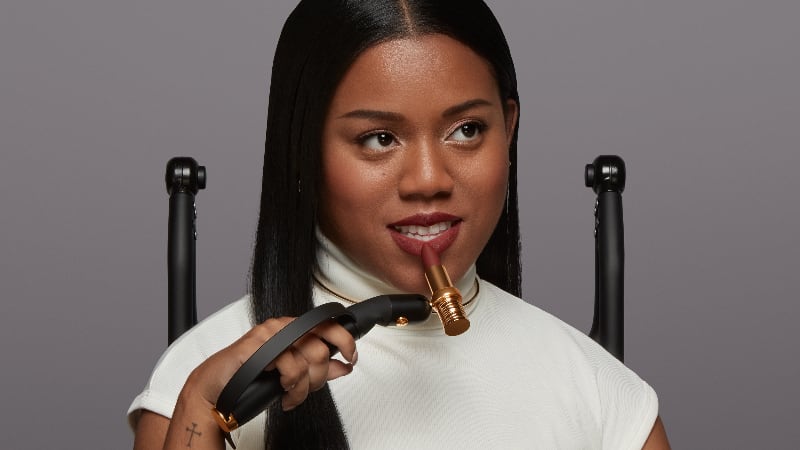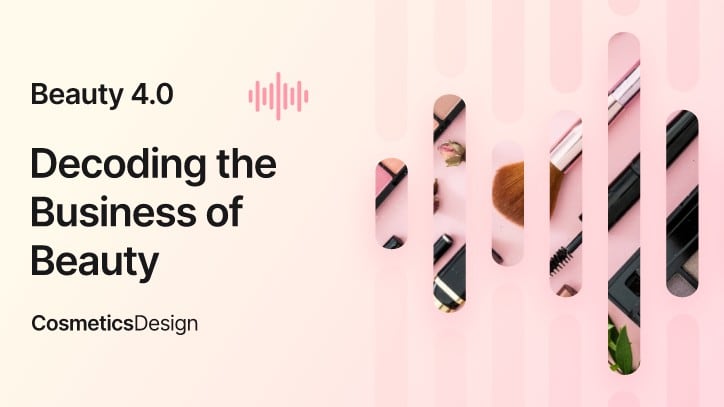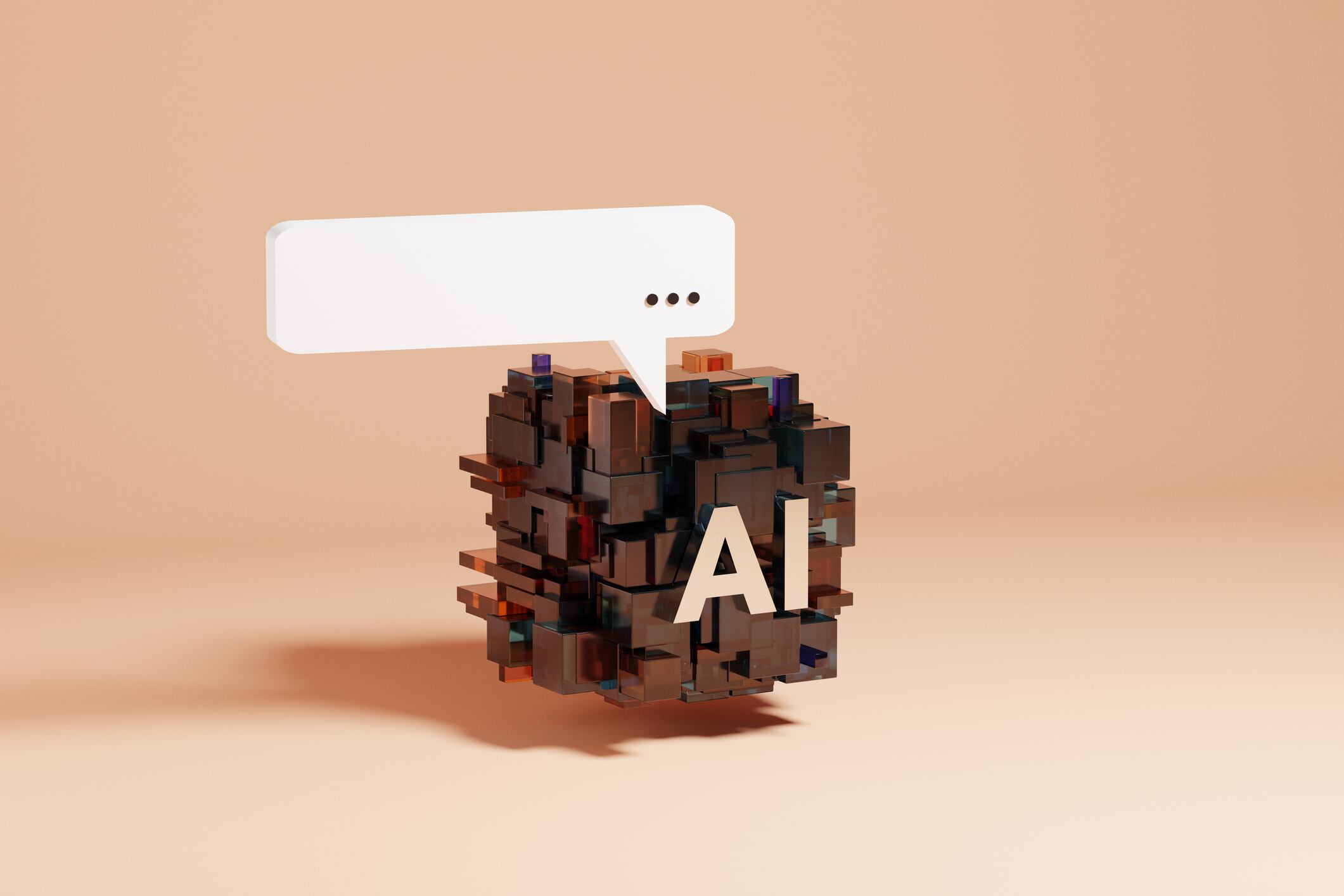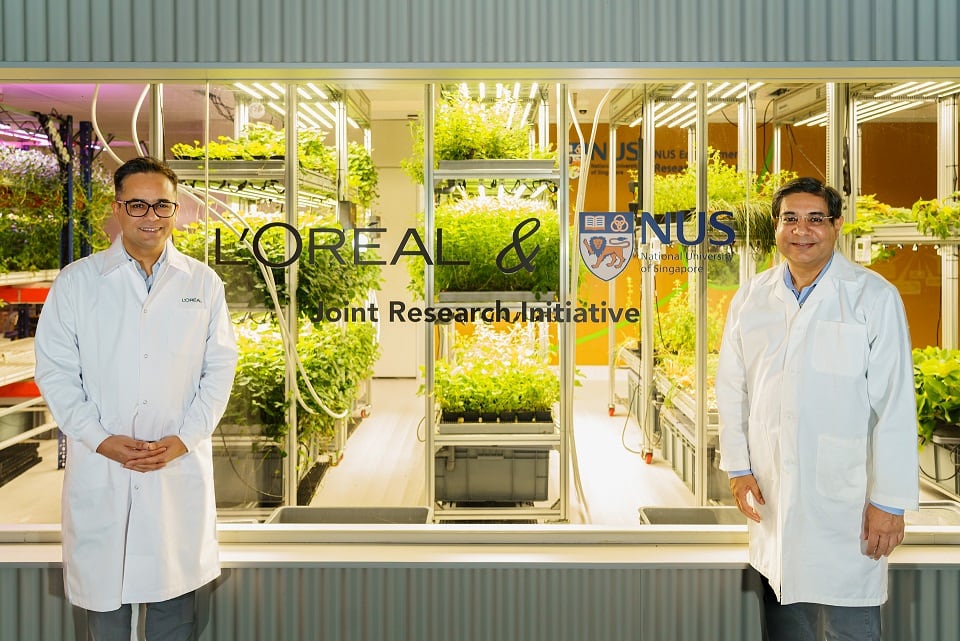Technological disruptions have changed the way people live, shop, and connect socially, transcending generations and geographies. This has also had an impact on the beauty industry from products to services.
“Tech has transformed the consumer journey by multiplying the number of possible interactions with brands, thereby redefining points of communication, products, and points of sale. Omnichannel shopping is now the norm. Online search, social and e-commerce, ratings and reviews, and speed deliveries are at people’s fingertips. The rise of ultra-personalised services and tailor-made products are a game changer for brands like ours.
“Disruption is also happening in the way people monitor their health, with wearable sensors or health apps integrated into people’s lives. This has fuelled consumer interest in using diagnostic tools to analyse their skin and hair, and get personal recommendations,” Vismay Sharma, President of L’Oréal South Asia Pacific, Middle East and North Africa (SAPMENA) Zone, told CosmeticsDesign-Asia.
He added that online touchpoints shaped experiences for 5.3bn internet users in 2023, with beauty videos on TikTok garnering over 1.8tn views and beauty-related hashtags doubled within a year.
“Technology has revolutionised lives at unprecedented speed and scale, and opened new business opportunities. L’Oréal has always embraced the changes in society and consumer shifts. We believe that beauty tech is essential to champion personalised, inclusive, and responsible beauty at scale based on the principle of ‘Beauty for Each’.
“With beauty tech, we see opportunities to elevate consumer experiences with trailblazing innovations by harnessing the power of data, artificial intelligence (AI), and generative AI to create new codes of beauty, and new relationships between our brands and consumers. For example, L’Oréal unveiled our new AI-powered virtual beauty advisor, Beauty Genius, at CES this year.”
According to Sharma, the company has “the world’s richest beauty database” amounting to 11,000 terabytes of data.
It also boasts a network of 8,000 digital, tech and data experts to enable enhanced beauty experiences both online and offline.
Individualised and inclusive
As consumers now expect beauty solutions that cater to their individual preferences and address their unique needs and desires, L’Oréal has responded to these calls for ultra-personalisation through various beauty tech innovations.
“For makeup specifically, we have trained our virtual try-on system using over 5,000 images that encompass a diverse range of ages, ethnicities, and genders. La-Roche Posay offers Spotscan, an AI-based solution developed in collaboration with dermatologists to assess the severity of acne. So far, 10m people have used Spotscan.
“In addition, we bring professional results to homes with devices like the YSL Rouge Sur Mesure custom lip colour creator, and shu uemura’s 3D shu:brow brow styling tool,” Sharma shared.
An estimated 50m people globally live with limited fine motor skills, which can make some daily activities, including applying makeup, challenging.
Lancôme’s AI-powered makeup applicator HAPTA was engineered and mechanically modelled to help people who have difficulty raising their arms due to limited mobility issues and who have poor grip strength, to be able to apply lipstick and mascara with precision.
It is a handheld, motion-stabilising device that is ergonomically designed with an easy-grip handle specifically made for those with arm-, hand- and wrist-related mobility conditions.
Through HAPTA, the brand hopes to make the expression of beauty through makeup “more accessible, achievable, and easier than ever before”.
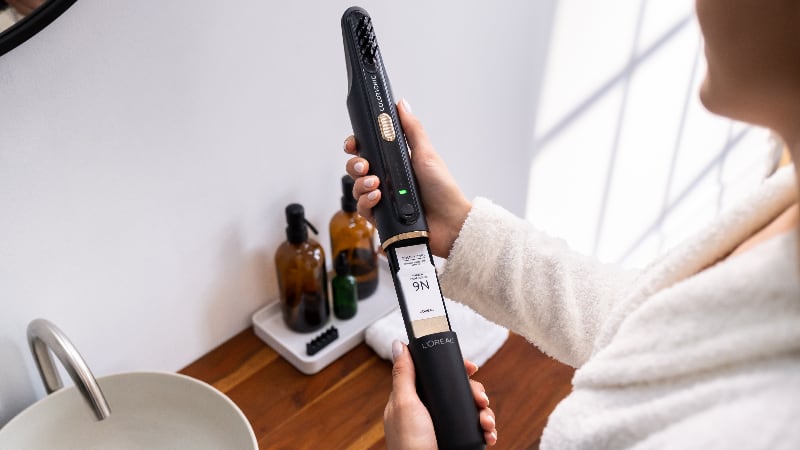
Advances in hair tech
One of L’Oréal’s biggest innovation highlights at CES held in January is AirLight Pro, which is slated to be launched in the US and Europe within this year.
Developed in partnership with Chinese tech start-up Zuvi, the device claims to be a “next-generation hair drying tool” designed for both beauty professionals and consumers.
It uses a combination of infrared light technology and wind to care for the hair with up to 59% visually smoother hair, up to 33% more hydrated hair, and up to 31% less energy consumption.
“Unlike conventional hair dryers with only heating coils, AirLight Pro is equipped with a special 17-blade, high-speed motor and patented infrared technology powered by tungsten-halogen bulbs for fast drying without excessive heat.
“By efficiently drying water on the hair surface, moisture is retained in the strand, resulting in smooth, shiny hair,” L’Oréal said.
Another new hair tech innovation is Colorsonic by L’Oréal Paris, an at-home hair colouring device with 15 global patents, which has been introduced in select markets.
It is a lightweight, handheld device to deliver a mess-free, drip-proof, and even application for consistent colour results. The oscillating nozzle brush moves 300 times per minute to cover hair quickly.
“Colorsonic is designed for all hair lengths, textures, curl patterns and colours. An attachment is included for those with shoulder-length or longer hair. Additionally, the cartridge system keeps the colour and developer separate until the device is turned on, which is a critical feature to keep the hair dye fresh for touch-ups.”
Compared to box hair dyes, the device not only reduces plastic use in terms of packaging, but the gloves included can be reused up to 10 times, unlike single-use gloves in existing products.


